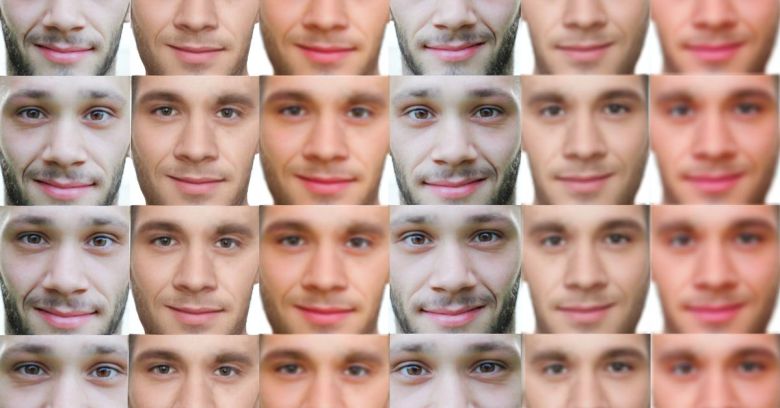Cyberattacks are nothing new and can happen to every company. These attacks can take many forms, from simple DDOS attacks and phishing attempts to more sophisticated attacks like the recent WannaCry ransomware attacks. And to no surprise, these cyber-attacks can have serious revenue impact. Smaller companies can lose over $100,000 per ransomware incident due to downtime (CNN Business, 2017). Even a simple phishing attack can cost a larger corporation at least $1.6 million a year (VadeSecure, 2015).
Recent developments show that cyber threats are getting more complex. The technology behind these attacks is getting more advanced and the systems to detect the cyber threats are falling behind.
Deepfakes: A new corporate threat
One of the newest potential cybersecurity threats to business is the ‘deepfake’ technology. The impact of deepfakes on society has been widely discussed in the field, looking at e.g. fake news, however the impact on business has not been discussed as widely. Recently, in the first known case of a deepfake attack on business, criminals were able to fool a company into wire transferring over $240.000. The CEO of an energy company thought he was speaking via phone to his boss, the chief executive of the firm’s German parent company. The caller on the phone asked the CEO to send the funds to a Hungarian supplier in an “urgent” request, with the promise that it would be reimbursed (Threatpost, 2019). The thing is, that in this case, the CEO was not actually speaking to his boss, but to criminals that were able to manipulate the voice and accent of his boss, using AI-powered audio deepfakes technology.
What are deepfakes?
The term ‘deepfakes’ first appeared on Reddit, an online social media platform, where a user produced fake pornographic videos of celebrities, copying their faces on actors using off-the-shelf AI products. Since the appearance on Reddit, deepfakes have been applied to a broad range of video and imagery. This includes but is not limited to face swaps, audio deepfakes, facial re-enactment and deepfake lip-synching. As the deepfakes technology is still developing, there is no clear set-in-stone definition yet. In essence, the term ‘deepfake’ can be defined as a “subset of fake video that leverages deep learning to make the faking process easier” (The Verge, 2019). Deep learning (or machine learning) is the key here. Using machine learning, the algorithm used to create deepfakes improves itself, making it increasingly harder to detect deepfakes.
Detecting deepfakes
As becomes clear from the CEO fraud example, deepfakes can have a real impact on business and revenue. But is there a way to detect these deepfakes, so companies can protect themselves? Well, not yet. At the moment, the industry does not have a method to detect them.
However, researchers and tech companies are contributing to the detection of deepfakes. Google released a large dataset of visual deepfakes to help build tools able to detect them (Google, 2019). Similarly, Facebook partnered with Microsoft, the Partnership on AI, and academics from a broad range of universities to build the Deepfake Detection Challenge (DFDC) with the goal to produce technology that everyone can use to detect when AI has been used to alter a video (Facebook, 2019).
Unfortunately, this may not be the solution to the problem. As the technology to detect deepfakes improves, the deepfakes themselves will most likely improve faster than methods used to detect them. Human intelligence and expertise will still be needed to identify deepfakes for the foreseeable future (Wired, 2019).
How companies can protect themselves
As there is no technology available yet to detect deepfakes, deepfakes are here to stay. Similar to computer viruses and cyberattacks, companies will have to learn how to defend themselves.
The defense starts with awareness. Employees need to be educated about the danger of deepfakes, how to detect them and how to report them (Symantec, 2019). Deepfake detection should become an integral part of the employee onboarding program and corporate security training.
Until the technology to detect deepfakes is there, companies should be aware that deepfakes can become a real threat.
Appendix
CNN Business (2017). Why ransomware costs small business big money. Retrieved from: https://money.cnn.com/2017/07/27/technology/business/ransomware-malwarebytes/index.html
Facebook (2019). Creating a data set and a challenge for deepfakes. Retrieved from: https://ai.facebook.com/blog/deepfake-detection-challenge/
Google (2019). Contributing Data to Deepfake Detection Research. Retrieved from: https://ai.googleblog.com/2019/09/contributing-data-to-deepfake-detection.html
Symantec (2019). Here’s How Deepfakes Can Harm Your Enterprise — and What to Do About Them. Retrieved from: https://www.symantec.com/blogs/feature-stories/heres-how-deepfakes-can-harm-your-enterprise-and-what-do-about-them.
The Verge (2019). Why we need a better definition of ‘deepfake’. Retrieved from: https://www.theverge.com/2018/5/22/17380306/deepfake-definition-ai-manipulation-fake-news
Threatpost (2019). CEO ‘Deep Fake’ Swindles Company Out of $234K. Retrieved from: https://threatpost.com/deep-fake-of-ceos-voice-swindles-company-out-of-243k/147982/
Vadesecure (2015). The corporate impact of phishing. Retrieved from: https://www.vadesecure.com/en/the-corporate-impact-of-phishing/
Wired (2019). Even the AI Behind Deepfakes Can’t Save Us From Being Duped. Retrieved from: https://www.wired.com/story/ai-deepfakes-cant-save-us-duped/


I think that this is indeed a greater danger to the world than people realize. Nowadays, for example, video proof can no longer be declared valid in a court case because it can be manipulated. I think for now you still need a lot of data to create a credible deepfake, but due to rapid technological changes this could change quickly. I recently saw a video in which deepfakes were made of famous people: https://www.youtube.com/watch?v=5rPKeUXjEvE. The video shows that both facial expressions and speech seem incredibly real.